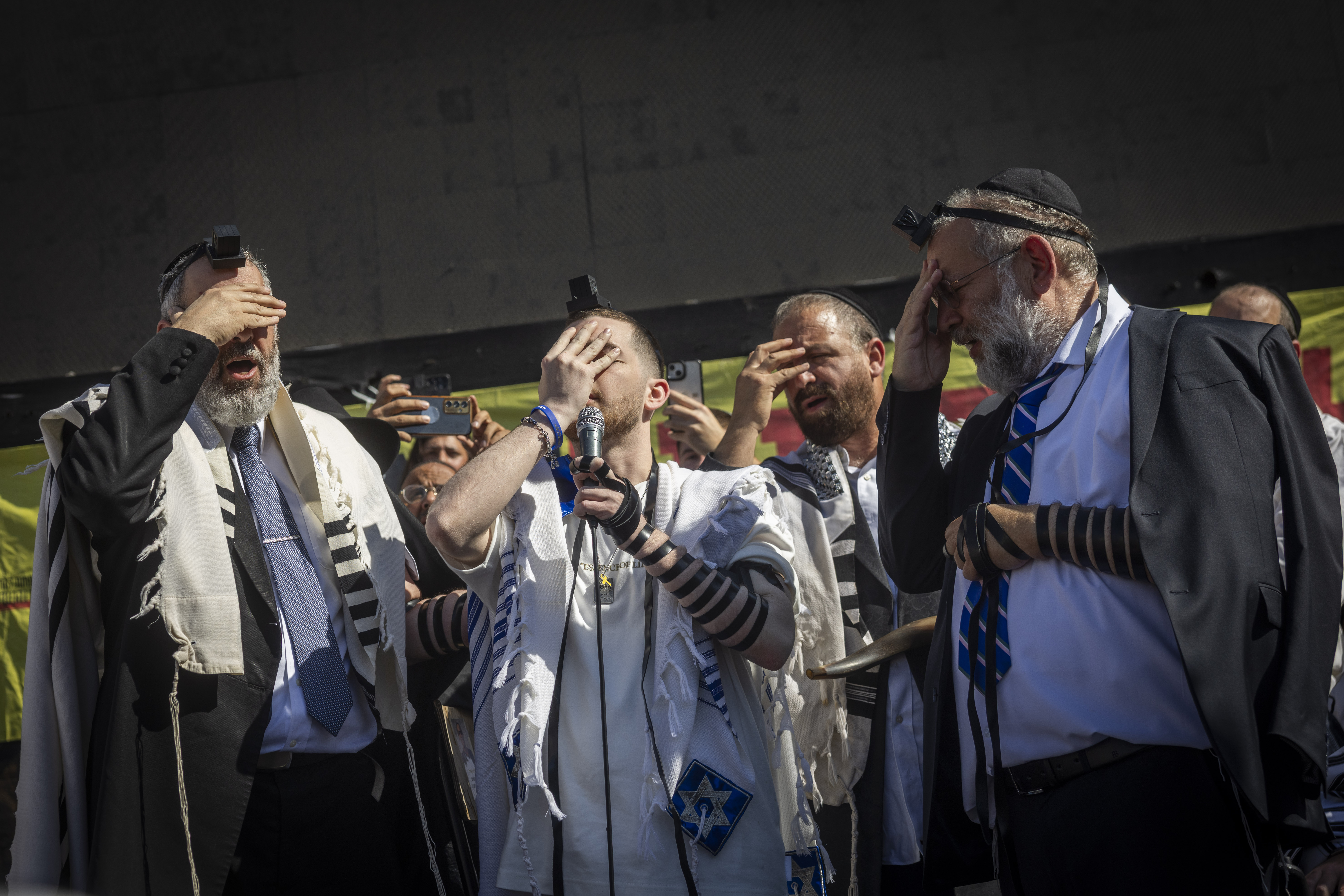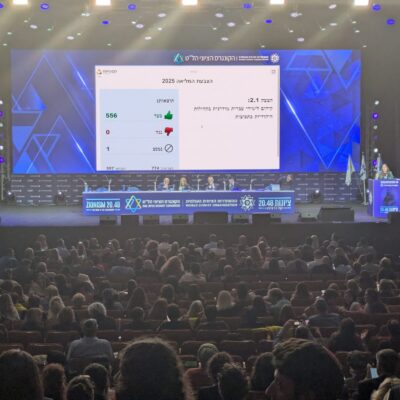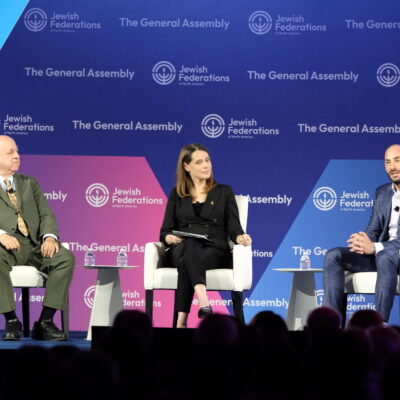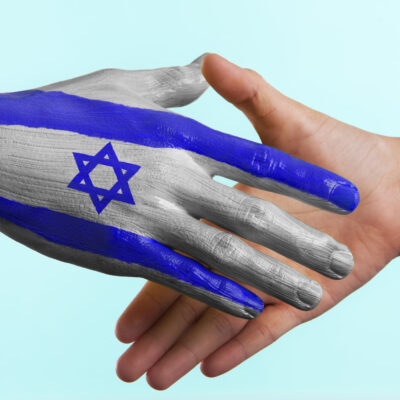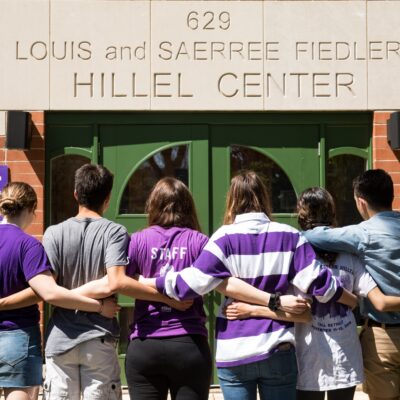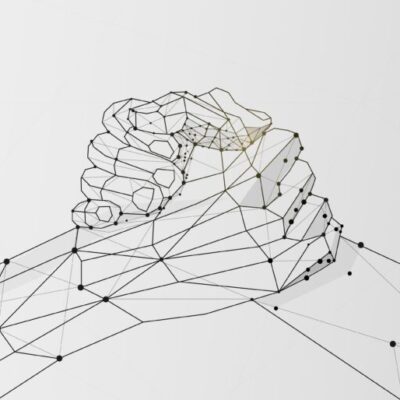NEVER FORGET
Needed now more than ever: ‘Survivors,’ with its diverse cast, teaches the Holocaust to teens
Play’s co-producer says Oct. 7 attacks gave the show, which has been running for six years, a renewed sense of purpose

Courtesy/Kathrine Kohl
Almanya Narula, Nyani Totty and Sheer Aviram appear in the Holocaust play 'Survivors,' in an undated photograph.
Actor Almanya Narula is Sikh and identifies as culturally Indian; she was raised in Bangkok and Mumbai, a product of displacement and in a family of refugees seeking sanctuary during the partition between Pakistan and India. In Mumbai, a millennia-old symbol for protection and peace was a big part of her childhood — only as a teenager did she discover that the interlocking lines of the swastika were not so benign, she told the audience after a September performance of the play “Survivors” at the Museum of Tolerance in Los Angeles.
“Survivors,” which was commissioned and first performed in Rochester, N.Y., is now running through five theater companies in the U.S. and Canada. It features six diverse millennial actors (and two swings) playing multiple roles and telling the stories of 10 Holocaust survivors. On the West Coast, nonprofit theater company Arts for Change produces the show in association with Teev Events, performing for students in the eighth grade and older at schools, colleges, temples and churches, or anywhere it’s needed, playwright and co-producer Wendy Kout told eJewishPhilanthropy.
“Survivors” was born in 2017, when Ralph Meranto, artistic director of Center Stage Theater at the JCC of Greater Rochester, was processing the deaths of several Holocaust survivors in the community, as well as a loss of funding for a program that brought survivors into the middle schools and high schools. How could they continue to bring the stories of the survivors into the community?
Kout told him the answer was to create a theatrical experience; she wrote it, and by 2018 began to tour in Rochester. Now five theater companies in North America perform the play, sharing elements from 10 survivor stories with schools and other audiences, sometimes altering the original script to reflect current events.
“It evolves over time no matter where it’s being presented,” Kout said, citing the decision, in one recent performance, to incorporate titles of banned books into the on-stage action, to reflect some states’ current book bans. “It will never be done, because it needs to live and breathe because of the times we’re in,” she added.
The Museum of Tolerance performance in September was sold out; a week later the Beverly Hills Temple of the Arts at Saban Theatre asked the “Survivors” producers to perform some vignettes from the show on Yom Kippur afternoon. That required Kout to edit the play into a shorter piece that faithfully adheres to the historical trajectory of the original show, to span the history of the Shoah, she said. “We adapt to whatever’s needed, in terms of space, in terms of audience,” Kout said.
After the Oct. 7 massacre in southern Israel, Kout said she and the rest of the team were stunned by the brutality and understood it only made their work more important. Speaking to eJP last week, Kout and “Survivors” co-producer Genie Benson, who is also Teev’s executive director, recalled the swirl of emotions around their Oct. 15 performance at the Ronald Reagan Presidential Foundation & Institute.
“The cast was extremely emotional,” Benson said, “and we weren’t sure if people would show up. But everyone came,” she added, “we had the feeling that people needed community and to be together.”
For Benson, the events of Oct. 7 felt like events her Holocaust survivor parents had described to her. She described, for example, the call from her Israeli cousin who had gone to Greece when the war started because her kids’ sleep was interrupted five times a night from sirens. Now, the cousin had asked Benson if her family could stay with her in Southern California. “It felt like she was a refugee, like my mother was a refugee who came to my uncle in the U.S., now my cousin was coming to me from Israel,” she said. “It’s this strange feeling of being in the past and present with the same thing happening again. It has not been easy to do the play,” she said, adding that after watching news all day, the content of the play “hasn’t allowed us any kind of escape.” However, she said, after each performance “I feel much better — like everyone’s doing their part and maybe my part is just to be educating [about the Holocaust].”
After the attacks, Kout said, she added “a resounding support-of-Israel moment to the play” — when a character, speaking about life after the war, says, “In 1948 there is the newly named country of Israel,” Kout added an “Am Yisrael Chai!” delivered “with joy and pride” from the entire cast, and a “long live Israel” from the character.
“I will be considering further edits but that addition had great impact and caused tears, including my own,” Kout told eJP.
To prepare for their roles, the cast visited the Holocaust Museum LA, touring the exhibits and meeting with Holocaust survivors. Stand With Us’ Holocaust Education Center works with the producers, students and their teachers in advance of the play and sometimes after if requested.
“When young people learn about the Holocaust, the best way to get through is sharing personal stories,” Holocaust Museum LA CEO Beth Keane told eJP in September. “It’s hard to comprehend what ‘six million people’ means, but telling a story resonates and makes the history more relatable; humanizes it and it becomes real.” Keane added that the mission of “Survivors” is in line with how the museum teaches history through artifacts, sharing personal histories through objects.
When eJP interviewed her last month, Narula recalled her first performance, for 500 students, many of whom had no prior exposure to or close connections with Holocaust narratives.
“[When] you have the statistics, you have numbers, this happened on this date, and then Hitler invaded Poland, you don’t have an individual person’s story of them going through it,” Narula said. “There was a moment that suddenly clicked [for them]: ‘all this happened to real people, who had hopes and dreams and lived individual lives and that could have been us.’”
This is precisely the play’s goal, said Kout: “the history of the Shoah through a personal prism.”
Benson said that the show’s approach will “take it down to the level of where [students] are and what they’re experiencing every day in their lives at their schools,” she said, “to understand the fact that if their friend is being bullied next to them, they need to do something about it.”
In addition to the Reagan performance, “Survivors” was also performed for schools and in several public performances in Santa Barbara, Calif., co-sponsored by Santa Barbara Education Foundation, ADL Santa Barbara/Tri Counties and the Jewish Federation of Greater Santa Barbara, and with ticket sales helping to cover some of the theater company’s costs. The group is also fundraising to book a few larger spaces, like the Saban Theater in Los Angeles and possibly Cal State Northridge, to provide more students with access to theater and to the personal stories told in the play.
With hate speech, antisemitic tropes and rhetoric becoming mainstream — even before the events of Oct. 7 — the history is relevant, Keane said.
“[We’re] seeing things that are similar to Germany in the 1930s,” she said, citing hate speech, stereotyping, propaganda and book-banning as examples. With the museum hosting 30,000 students per year through its student tour program and with its campus under expansion, Keane added, “we can’t wait for ‘Survivors’ to perform at our 200-person theater when it opens” at the end of 2025.
For Yahm Steinberg, one of three Jewish actors in the diverse cast, “Survivors” is her second Holocaust-related production this year, after a performance in a short from the L.A.-based theater company The Braid. This confluence of on-stage Holocaust representation feels “very powerful,” Steinberg, the grandchild of a Holocaust survivor, told eJP.
“Being Jewish, we can’t fight this fight alone,” Steinberg said. “Having a cast of people who aren’t Jewish but care so deeply, who are helping us educate about what happened and hopefully mitigate hate and violence moving forward, it means a lot.”
The diversity of the cast — which also includes queer, Asian American and Black American representation — provides space for their intersectional identities, Steinberg added, “and helps us have more empathy and understanding for others undergoing similar struggles.”
At the Museum of Tolerance show, eight survivors, their families and caregivers were seated in the first row of the Peltz Theatre. “The cast looking into their faces were very emotional, more than for most shows,” Kout said. The emotion flowed both ways, as one of them, David Lenga, who was born in Lodz, Poland, and survived Auschwitz, stood during the talkback and addressed the actors.
“I’m a 95-year-old Holocaust survivor and frequent speaker on the subject, impacting thousands,” Lenga said. “I must tell you that your powerful play indeed fills a dire need to enlighten the vast ignorance in the larger public. For this noble effort I salute you and applaud your so-impactful play, ‘Survivors.’”
Steinberg said Lenger’s comment was “profoundly moving.”
“Some of the last things they [Holocaust survivors] are seeing is the resurgence of hate, the same warning signs [as during the Holocaust]. Have we learned nothing?” Steinberg asked. “It’s so easy to feel disheartened but this [play] reminds people of humanity and tolerance and brings history to life in a way that’s really important, so we understand it and don’t repeat it.”
Cast member Andrew Abaria plays 9-year-old Carl Voldman, who steals food for his family in the Jewish ghetto, and is narrowly saved from execution, but not before his rabbi and school friend are killed.
“I tear up every time during that scene,” Abaria said. “While it is emotionally taxing to live out that moment during each performance, I am honored to be able to use my emotional intelligence and artistic energy to bring to life this important story.”

 Add EJP on Google
Add EJP on Google